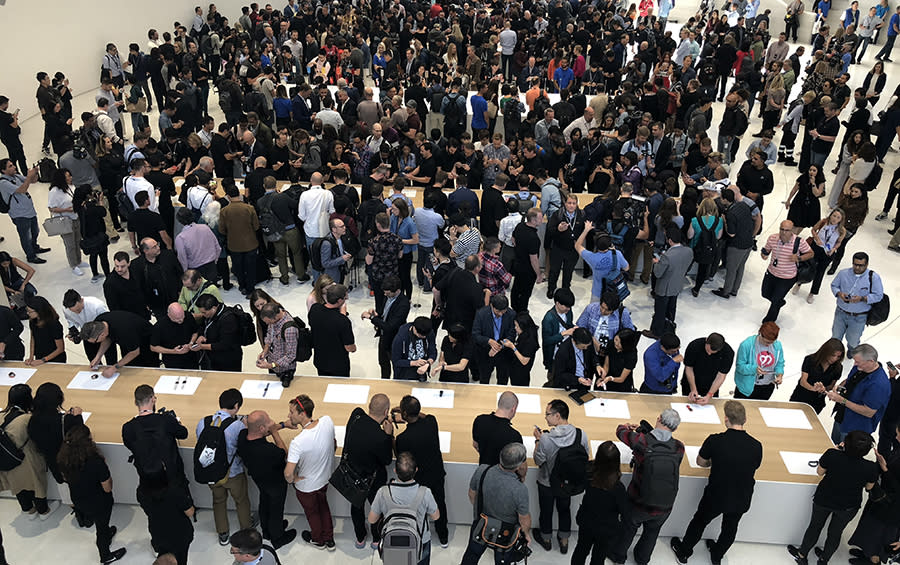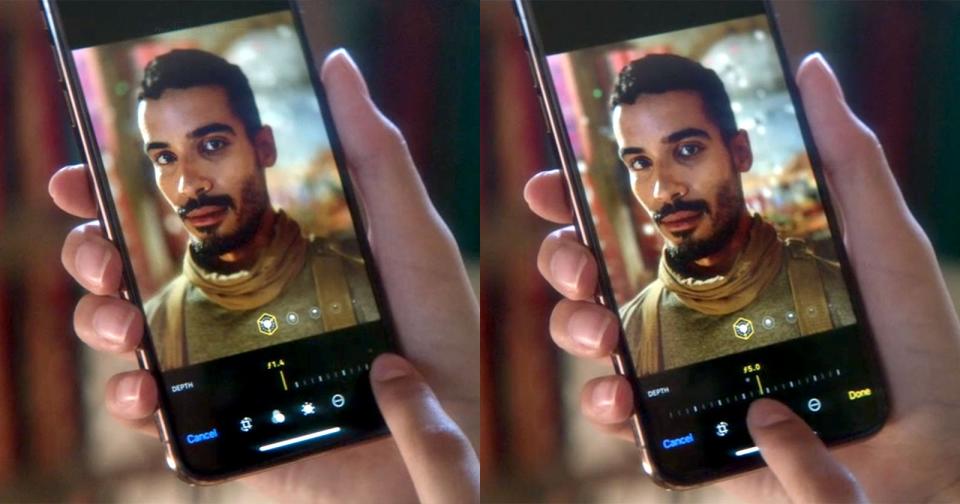Hands on with Apple's three new X-class iPhones
Well, there’s no doubt about it: This is an S year.
As longtime Apple (AAPL) followers are aware, Apple seems to alternate iPhone design years. For every Big New Dramatic iPhone Year (like iPhone 4, iPhone 5, iPhone 6), there’s an S year (iPhone 4s, iPhone 5s, iPhone 6s). During the S years, Apple engineers spend their time refining the last year’s model. They make it faster, enhance its camera maybe, but make no changes to the design or basic operation.

On Wednesday, at its spaceship-shaped headquarters in California, Apple unveiled three new iPhone models. All three are spinoffs of last year’s iPhone X. They’re called the iPhone XS, XS Max, and XR. (It’s pronounced “TEN-s” and “TEN-r,” even if you think it really is Xcessive.)
The X-class phones all have these features in common:
All screen. There’s no empty space above or below the screen. More screen, less phone. Better yet, the Xs models are OLED screens—the stunning colors and deep blacks (million-to-one contrast ratio!) of organic LED technology. (And yes, this means that the controversial “notch”—the gap in the top edge where the cameras and sensors hide—is on all three of the new models.)
No home button. As on the iPhone X, the new phones substitute various swipes and side-button presses to perform the functions of the old Home button. Do a quick, short swipe upward to go Home. Hold down the side button to trigger Siri. And so on. (Here’s my complete list of the new gestures.)
Face ID. No more fingerprint reader. Instead, the phone has a face scanner that unlocks the phone when it recognizes you. In iOS 12, also released this month, you’ll be able to train your phone to recognize up to two faces.
Wireless charging. It’s not really wireless, meaning through-the-air charging. It’s laying your phone on a special charging pad. You’re no longer plugging in a power cord. Nice enough. Apple uses the same charging standard that Samsung and other companies use, called Qi (pronounced “chee”). You don’t have to buy Apple’s charging pad; you can use any company’s. You’ll have to, in fact, since Apple’s AirPower charging pad still isn’t available, a year after it was announced.
So what’s new?
So what is new in these new phones? There’s a faster chip, called the A12; better waterproofing (withstands 30 minutes, six feet under water); greater stereo separation on playback; stereo recording in videos; and “the most durable glass ever in a phone,” according to Apple.
Apple says that the batteries are better, too—the XS gives you 30 minutes more than last year’s iPhone X, and the Max gives you 90 minutes more than the 8 Plus.
But if you’re looking for any new feature features, on par with Siri (which debuted on the iPhone 4S) or the fingerprint sensor (5S), you’ll be disappointed. There really wasn’t much to learn from the hands-on session for reporters today. They look, operate, feel, and weigh just about the same as the iPhone X.
In other words, the biggest changes Apple made were things like the pricing and the screen sizes.

Here’s how they break down:
iPhone XS. This one’s basically last year’s iPhone X—same size and screen—upgraded. Still costs $1,000 to $1,350 (for 64 to 512 gigabytes of storage). Shipping on September 21. The Xs models are available in white, black, or a new gold tone.
iPhone XS Max has the biggest screen ever in an iPhone—6.5 inches diagonal—but the phone itself is no bigger than last year’s 8 Plus. I found it surprisingly small in the hand. Costs $1,100 to a staggering $1,450. Ships on September 21.
iPhone XR. The R could stand for “reduced price” ($750 and up) or “rainbow colors” (it’s available with a back panel in black, white, red, yellow, coral, red, or blue). This phone’s size is halfway between the iPhone X and the Max. It’s got mostly the same guts as the other new iPhones, except that it doesn’t have the dual lenses on the back (for zooming in), the pressure-sensitive screen (for summoning shortcut menus), or the OLED screen technology. It’s a less expensive LCD screen—one that doesn’t quite reach the edges of the phone—although it still looks fantastic. Ships on October 26.

Apple is keeping the iPhone 7 and 8 models alive, for reduced prices ($450 and $600 base models, respectively), along with their Plus-sized siblings ($570 and $700).
All told, there are now 17 different iPhone models and configurations. You could call it the Samsungization of Apple.
And the naming scheme is just getting nuts. Will there ever be an iPhone 9?
One new feature
There’s one new feature in these new phones, and it’s pretty nice. You know Portrait mode, which gives your photos a beautiful blurry background, as though taken by an expensive SLR?
Apple has worked wonders on the bokeh (the quality of that blur). Not only is it much more realistic, but you can actually see it creep around the edges of your subject, so that it’s many degrees of blur depending on distance.
In the Photos app, you can now drag a slider to control how much blur you get. It’s quite cool.

The HDR photos (high dynamic range, offering a greater range of darks to lights) happen faster now, too, and sample a greater number of photos to arrive at the final, merged image.
And all of this runs on iOS 12, the free software update that’s coming September 17. You can read about it here.
The deal
Twitter’s reaction was an even split between “Apple’s just treading water, losing the race to Samsung” and “My god, they can’t be expected to reinvent the phone every single year! These are fantastic tweaks!”
But look at the bright side: If you just bought the iPhone X last year, you can stick with what you’ve got. You don’t have to suffer the indignity of having a radically outdated phone.
And if it’s been some years since your last iPhone, then lucky you: You can dive into the new X class, confident that you’re getting a wicked fast, state-of-the-art phone that takes astonishing photos and looks fantastic in your hand.
David Pogue, tech columnist for Yahoo Finance, welcomes comments below. On the Web, he’s davidpogue.com. On Twitter, he’s @pogue. On email, he’s poguester@yahoo.com. You can sign up to get his stuff by email, here.
More by David Pogue:

